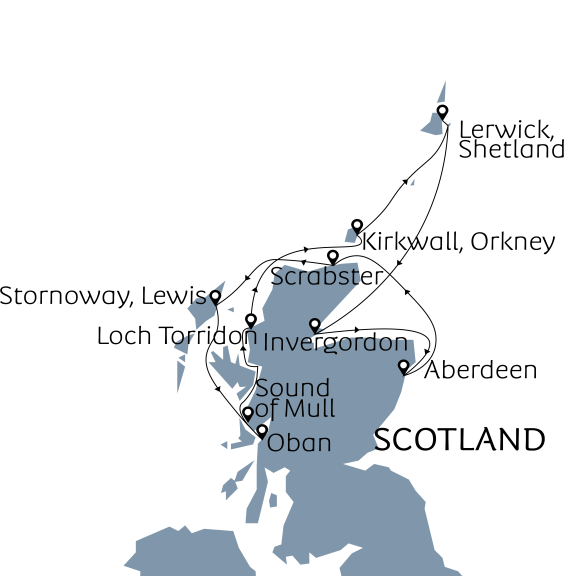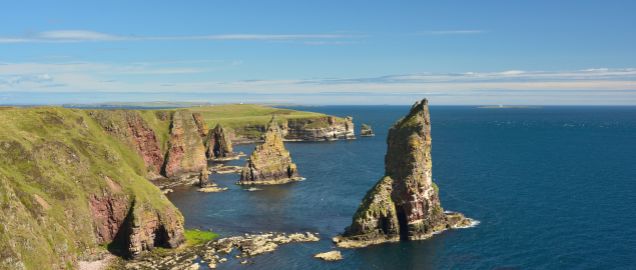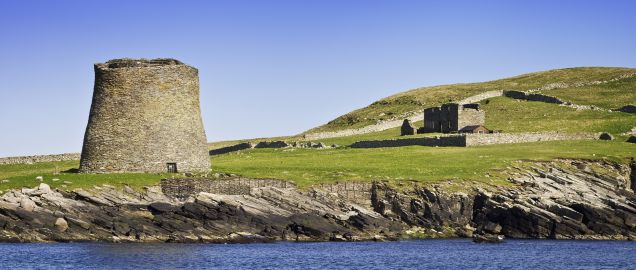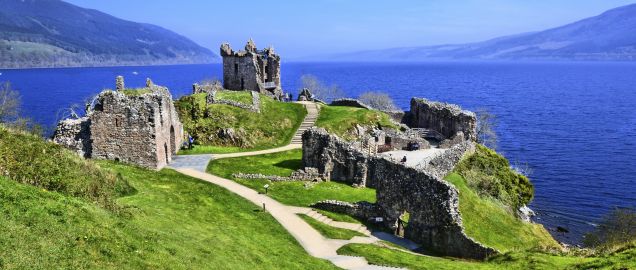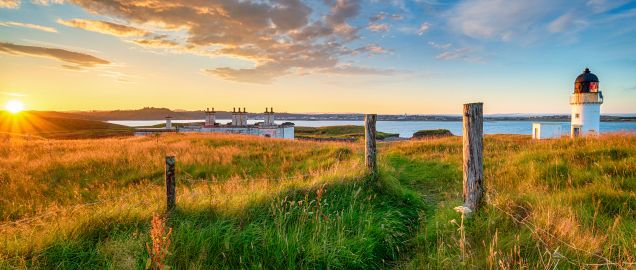The Jewels of Scotland - 2025
Like a tiara of emeralds, islands adorn the coastline of Scotland - and travel by sea is the only way to explore!
Scattered between the mountains and glens, the lochs and bays of Scotland lie hidden communities, historical gems and natural wonders. Each one is begging to tell you stories about a dramatic past reaching back to birth from hot molten lava millions of years ago, to millenia-old Stone Age dwellings – or just 12 years to create exquisite single malt whisky.
Embarking on Albatros’ purpose-built expedition vessel, Ocean Albatros, we head for our first landing on the Orkney Islands, steeped in ancient StoneAge mysteries and Viking heritage. From here, we will venture to Stornoway, capital of the Scottish Gaelic culture and language before experiencing the natural majesty of St Kilda, Britain's most remote outpost. Experience unforgettable encounters with the birds of Lunga, and sample excuisite Tobermory Whisky on the Isle of Mull. Witness the jaw-dropping wilderness of the Northwest Highlands and the warm hospitality of Ullapool, hike through verdant bird-filled coastlines on Shetland, and feel dwarfed by the mountains of Invergordon. During evening lectures on board, your knowledgeable Expedition Team will help to interpret these islands' fascinating geological and human history, ecology and culture.
Whether it is watching for dolphins in the Minch, gliding into quaint villages and towns, hiking the mountains and glens of the Highlands or anchoring in complete wilderness to experience abundant wildlife, there is no better way to experience Scotland than onboard an expedition cruise. This spring cruise aboard Ocean Albatros is the ultimate journey upon storied Scottish waters, complete with whisky, wildlife, and spectacular landscapes! Experience with us!
Facts about The Jewels of Scotland - 2025
- Europe
- Scotland
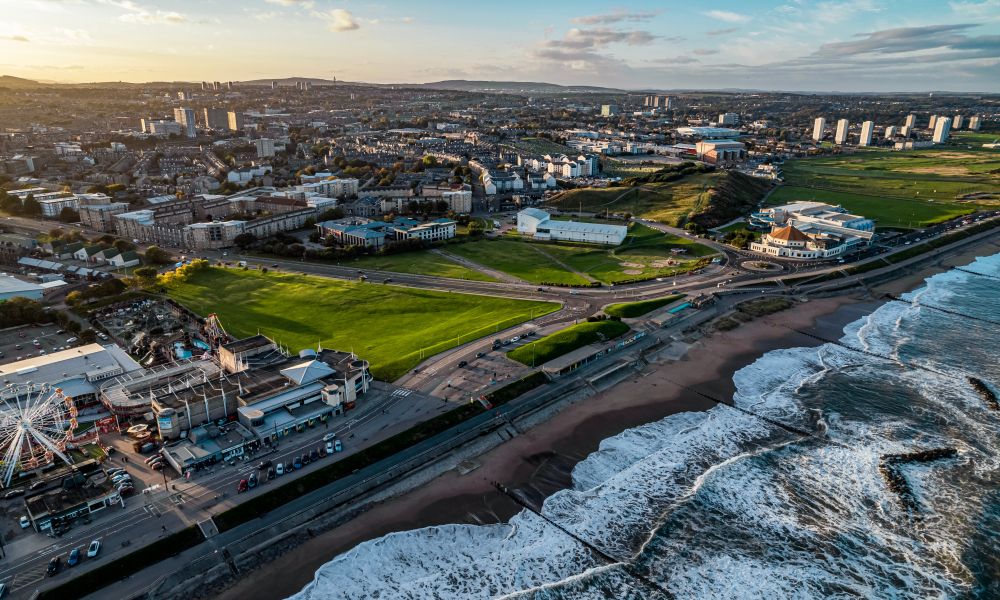

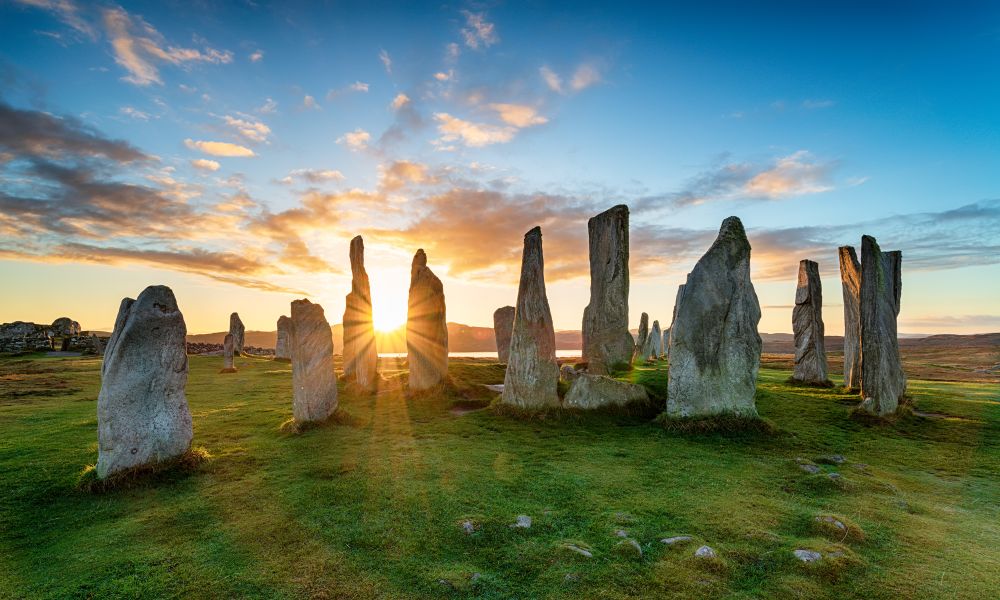
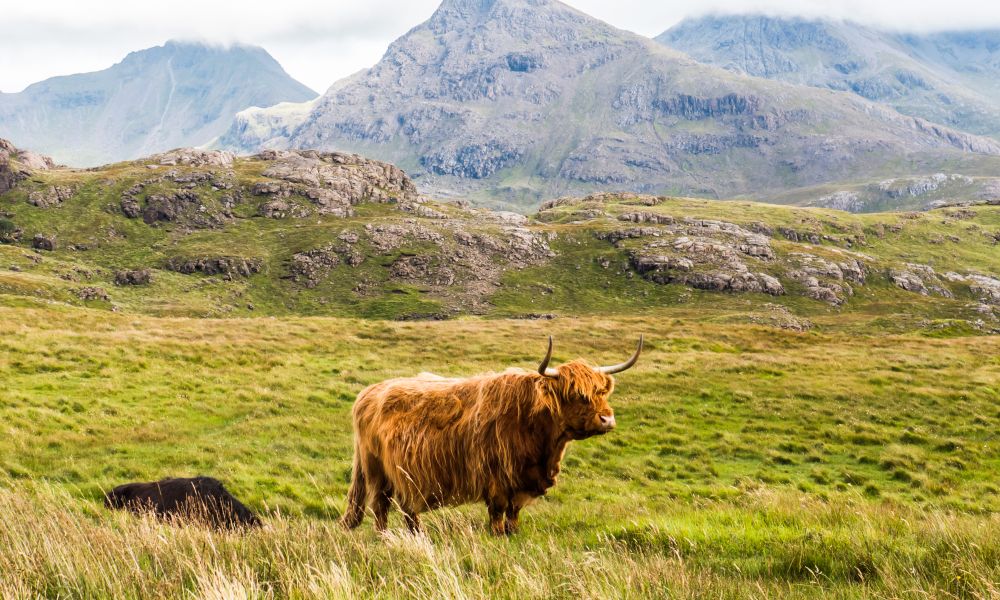
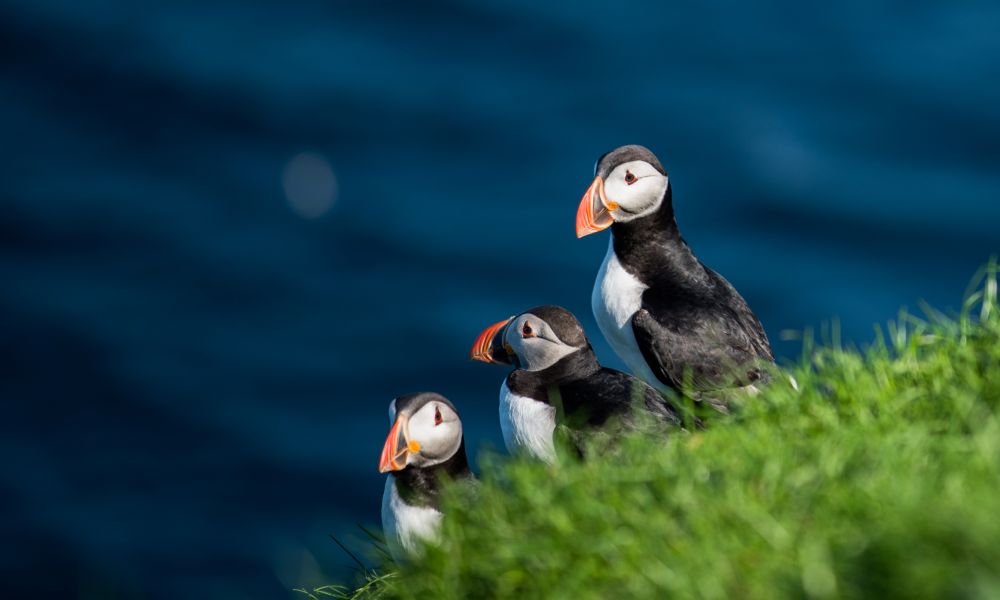
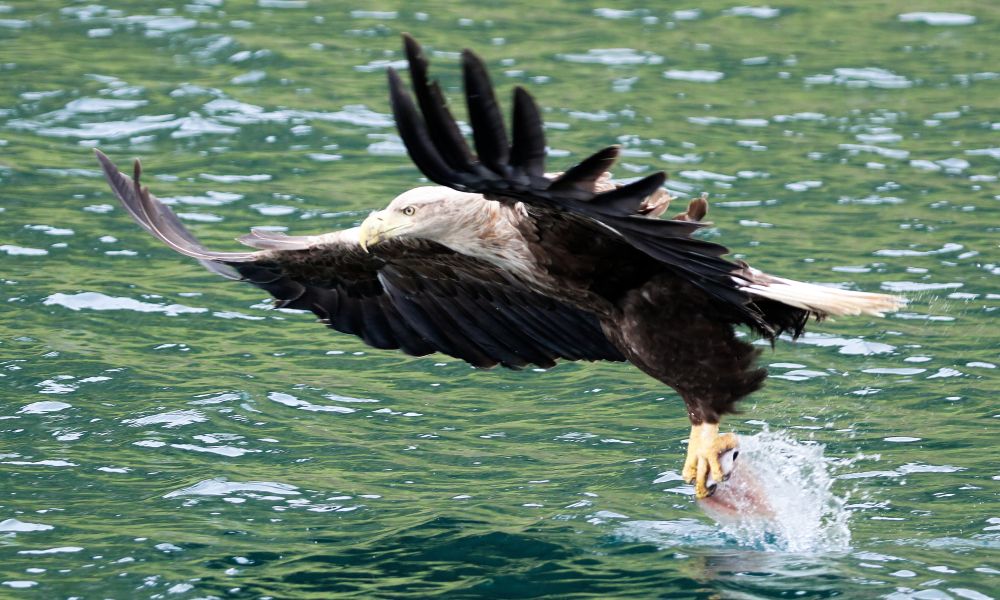
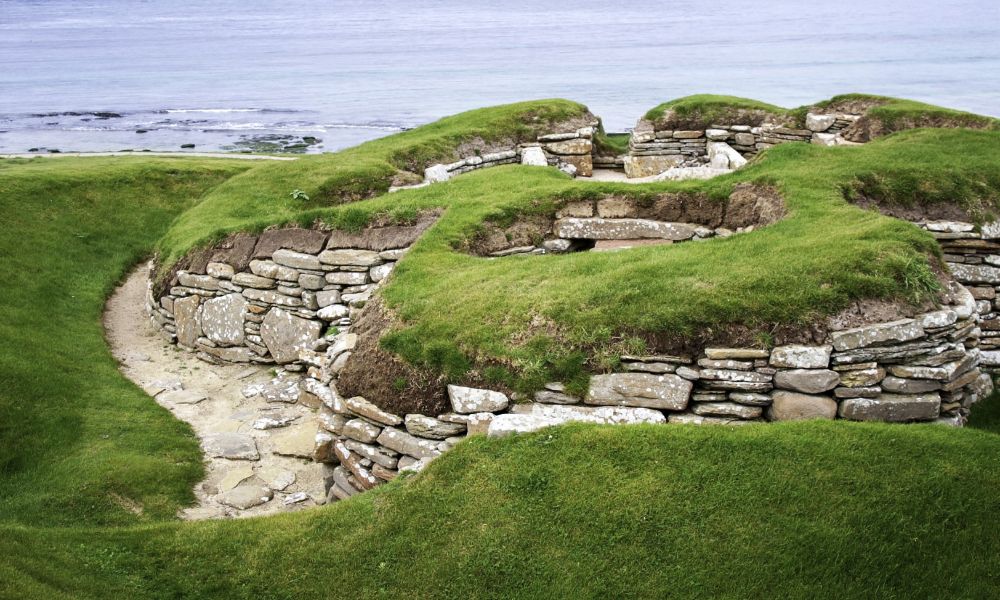
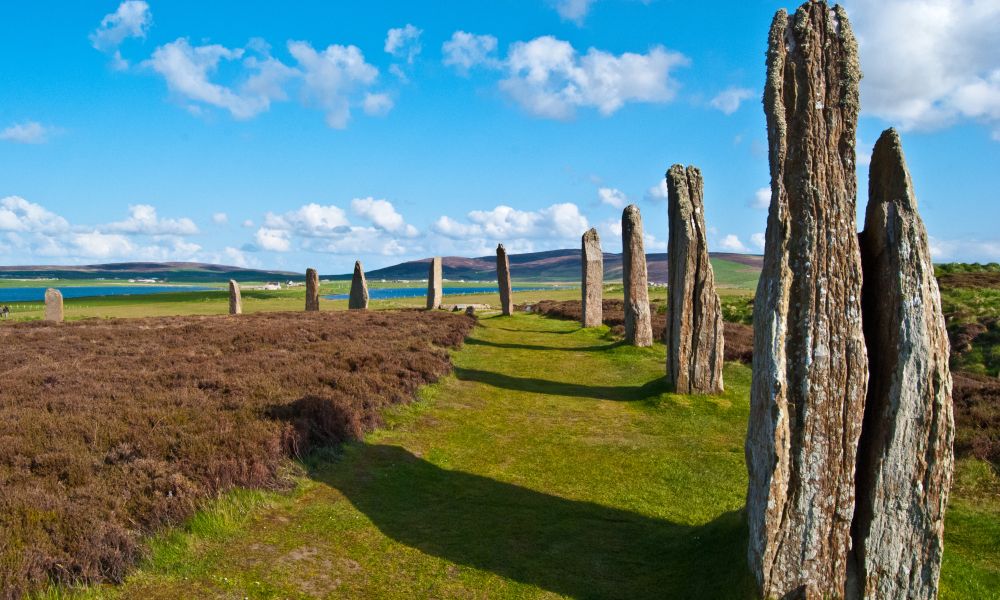


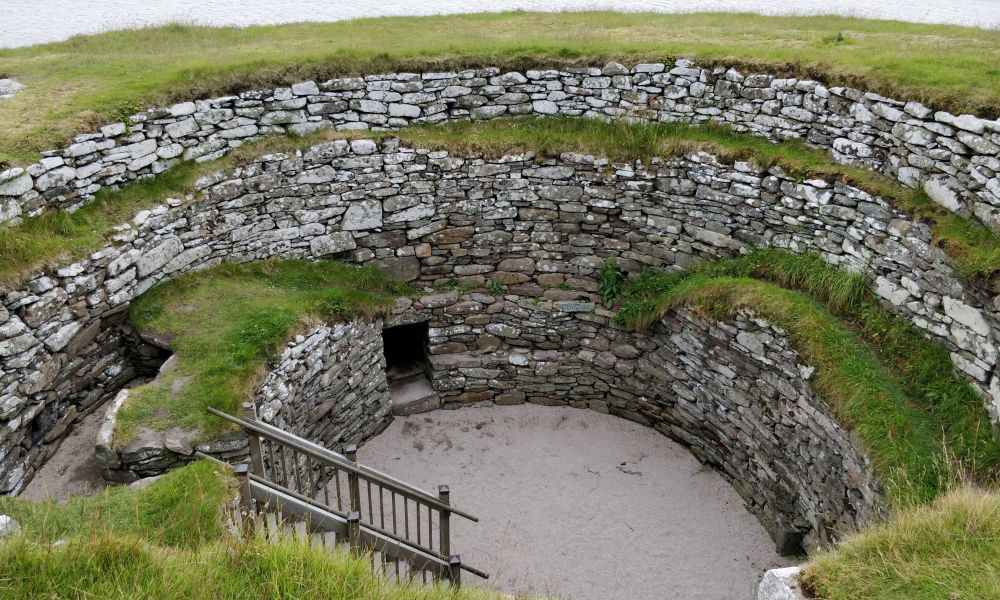
Day 1
ABERDEEN, THE GRANITE CITY
Our journey begins in Aberdeen, where MV Ocean Albatros awaits in the city's bustling docks. Aberdeen, the Scottish city of adventure, is known for its many titles - the most famous being the Granite City. With its glittering Victorian buildings, it's easy to see why the city was once the world's granite-export capital. Today, the city is the epicenter of the British energy industry and a lively cultural hub, with an exceptional variety of museums, galleries, theatres, shops, cafes, and restaurants for visitors to discover.
In the afternoon, embark Ocean Albatros and make yourself at home in your confortable stateroom. After the mandatory security review and drill, we sail out along the coast of North East Scotland.
Day 2
Scrabster, Caithness
Sitting at the northernmost tip of Great Britain, Scrabster is Britain's northernmost mainland port, adjacent to the town of Thurso. The town is further north than the southern coast of Norway, and the surrounding scenery is correspondingly green, windswept and wild. While at a first glance, Scrabster may seem remote and isolted, it is surprisingly well-connected. Scrabster is the home port of the Hamnavoe, one of the Northlink ferries connecting Stromness on Orkney with the British mainland, and cargo vessels regularly depart from the port bound for Norway, Shetland and the Faroe Islands.
A stone's throw from Scrabster lies John o' Groats, the traditional northernmost point of mainland Britain (although nearby Dunnet Head is actually further north). Thousands of people have set off from this lonely windswept promontory bound for the Lizard on the southern tip of Cornwall - Britain's traditional southernmost point, 1,410km away. It is not uncommon to see police officers in the area, warily eying motorists, many of whom will attempt to break the speed record to Cornwall (and, by necessity, several traffic laws in the process)!
Near John o' Groats lies the Castle of Mey, a rambling stone residence constructed in the late 16th Century. The castle was a lonely and remote outpost (even for the Highlands of Scotland) until Queen Elizabeth The Queen Mother, widow of King George III and mother of Queen Elizabeth II, fell in love with it in the 1960s and set about restoring it for her own use. After her death, the castle has been managed by a charity, and welcomes visitors throughout summer - except of course when King Charles III is in residence!
Day 3
STORNOWAY, ISLE OF LEWIS
From Scrabster, we navigate through the infamous Minch to the remote string of islands known as the Outer Hebrides. Here lies the Isle of Lewis, a rugged and bleakly beautiful land of heather and moor, loch and stream, home to the harbor town of Stornoway. Isolated from the Scottish mainland, Lewis is one of the few remaining strongholds of the Scottish Gaelic language, an ancient tongue closely related to its Celtic cousins: Irish, Welsh and Breton.
The third largest island town in Scotland (after Kirkwall and Lerwick), life in Stornoway centers around the town harbour. Here, sleek modern energy industry vessels float alongside traditional fishing boats. Expect to hear fishermen chatting in Gaelic, tossing fish ashore to be served in harbourside restaurants; you may smell peat smoke on the breeze, a vital ingredient in the islands' legendary kippers and smoked salmon.
Outside of Lewis lies mile upon mile of some of Scotland's most stunning scenery, as well as ancient gems such as the Neolithic Calanish Standing Stones. Closer to town lie more modern monuments such as Lews Castle, a grand stately home with a fascinating history. Stornoway town centre holds an excellent range of boutique shops, many selling Harris Tweed - one of the Hebrides' most famous products.
Day 4
Sound of Mull, Oban, Argyll and Bute
During the morning, join your expedition team out on deck as Ocean Albatros cruises through the Sound of Mull, one of Britain's most spectacular waterways. Separating the Isle of Mull from the Scottish mainland, the Sound of Mull is lined by wild windswept mountains, dripping forests, and tiny colourful communities. Be sure to look to the northern side of the Sound on the approach to Oban to see the famous Lismore Lighthouse, as well as on the water. The cold calm waters of the Sound of Mull are home to a plethora of wildlife, including dolphins, otters and even basking sharks!
Nestled deep in the maze of islands and waterways of the Inner Hebrides lies Oban, Scotland's island gateway. The town has a population of around 8000 residents, but this can more than triple during the busy summer period, as visitors come and go from the Scottish isles or explore around Oban itself. To the north of Oban lies Fort William and the Great Glen; to the west lie the majestic inner hebrides; to the south lies Loch Lomond and the Trossacks and the great city of Glasgow, and to the East lies mile upon mile of unspoilt Highland wilderness. Oban is famous for its culinary scene - the rich waters of the Inner Hebrides nourish a huge variety of shellfish, and salmon farms can be found in almost every bay. The smoked salmon produced locally is exported worldwide, however it is best enjoyed overlooking the waters where it was farmed - ideally washed down with a smoky local whisky!
Day 5
Loch Torridon, Northwest Highlands
Upon arriving in this spectacular waterway, visitors could be forgiven for assuming they had arrived in the fjords of Norway - the stunning steep sides of Loch Torridon share a common origin, having been scraped out of the landscape by passing glaciers over thousands of years. However, the rocks surrounding Loch Torridon tell a story which goes even further back into Earth's past. It was here that early geologists puzzled over the origin of the varied and contorted rocks of the Scottish Highlands, which have more in common with those found in Greenland than with the rest of Europe. The story told by the rocks reaches back 3 billion years, documenting the opening and closing of generations of oceans, the rise and fall of mountain rainges, and even a meteorite impact around 1.2 billion years ago.
The landscape of Loch Torridon easily matches its storied geological history. Bald mountains, often snow-capped even in summer, stand isolated amid rolling hills, as though forgotten by the passing of time. Wind-crippled trees, bent by the ferocious weather of the northwest highlands seem sculpted by inhuman hands. Steely waters hide a huge variety of wildlife, including otters, seals and dolphins. Join your Expedition Team to take a Zodiac cruise through this staggering landscape, and hunt for Scottish wildlife. Keep en eye on the skies - the craggy sides of the loch are the ideal habitat for white-tailed eagles, one of the largest and rarest birds in Britain.
Day 6
KIRKWALL, ORKNEY
During the night, Ocean Albatros will navigate around Cape Wrath to arrive at the port of Kirkwall on the breezy Orkney Isles, situated off the northern coast of Scotland. Roughly translated from Old Norse as "Seal Islands," Orkney is rich in wildlife and Viking history. Orkney and Shetland are relative newcomers to Scotland, having been sold by the to Scotland by Norway in 1472 as part of a royal dowry. The islands retain much of their Nordic heritage, from local slang, to place names the distinctively Nordic flag flown on the islands.
Orkney's history reaches back far further however; the rolling hills of Orkney hide a treasure trove of ancient remains reaching back to the Neolithic, with literally hundreds of sites scattered across the islands. A UNESCO World Heritage Site, the Neolithic Heart of Orkney includes monuments such as the 5000-year-old ceremonial stone Ring of Brodgar, and the touchingly domestic Neolithic village of Skara Brae. Nowhere else can visitors observe such spectacular vestiges of one of the earliest European civilizations.
Kirkwall itself is the thriving heart of the islands, and by far the largest town on Orkney. A tangle of narrow streets form the town centre, at the middle of which looms the magnificent St Magnus Cathedral, the often-gruesome history of which stretches back to the Viking era. Downtown Kirkwall is home to a plethora of independent shops selling local artworks and cosy cafes and restaurants serving hearty Scottish fare, as well as two world-renowned whisky distilleries. Increasingly, the strong ocean currents and winds around Kirkwall are turning the town into a hub for renewable energy - Orkney generates around 130% of it's own energy needs, entirely from renewable sources!
Day 7
LERWICK, SHETLAND
We are set to approach Lerwick, capital of Shetland in the morning. Shetland consists of more than 100 islands, of which only 15 are inhabited year-round. The islands form the northernmost part of the United Kingdom, located approximately 300 km above the Scottish mainland.
Like Orkney, the heritage of Shetland dates back to the Neolithic period, and Shetland was part of the Kingdom of Norway until the late 1400s; the Norn language, derived directly from Old Norse was spoken on the islands until the 1850s, peppering the placenames and slang of Shetland with Viking heritage. Norse connections are strong here, from the Shetland flag to the Up Helly Aa Fire Festival, held every year in midwinter. Modern Lerwick is a prosperous, bustling town, which thrives on the oil, gas and green energy industries, and increasingly on tourism. Enjoy a stroll through the town's busy high street, lined with independent shops selling local products, immerse yourself in history at the Shetland Museum and Archives, or watch the local ferries come and go from the busy harbourfront.
Shetland's history stretches much further back than the Viking period and, like Orkney, holds a plethora of fasctinating ancient sites. Many of these such as the exceptionally well-preserved and restored Broch of Clickimin can be accessed in a leisurely stroll from downtown Lerwick, along with breathtaking coastal vistas, and the chance to see wildlife including puffins, gannets, dolphins and even orcas!
Day 8
Invergordon, Scottish Highlands
Sailing through the calm waters of Cromarty Firth, the legs of gigantic oil platforms on their way to the North Sea dwarf the small town of Invergordon. Even the gigantic oil platforms however are dwarfed by the backdrop of mountains, moors and glens which lie behind the town. One of the gateways to the North Scottish Highlands, Invergordon is a surprisingly busy cruise port, receiving visitors from all over the world.
Invergordon was founded during the Victorian period, as the harbour was far superior for modern ships compared to the nearby (and much older) town of Inverness. The town expanded during the First World War as a naval base, strategically situated on several North Sea shipping routes. After the Second World War, the town's sheltered deep water port was repurposed, becoming an important hub for the oil and gas industry. Signs of the prosperity this has brought to Invergordon are cleary visible throughout the bulsting town center, which is also renowned for it's street art, with a number of massive murals depicting local history and culture scattered through the town.
Invergordon is a popular gateway to nearby Inverness, itself a gateway to the Great Glen of Scotland; most visitors however come to see the stunning views and murky waters of Loch Ness, the legendary waterway home to the fabled monster. Much more commonly seen than the monster itself are the vast flocks of waterbirds and dolphins which thrive in the waters of Cromarty Firth and the surrounding seas - keep binoculars at the ready!
Day 9
THE JOURNEY ENDS IN ABERDEEN, SCOTLAND.
During the final day of our expedition, Ocean Albatros will come alongside beneath the glittering grey granite of Aberdeen. After a hearty breakfast, bid a fond farewell to the Crew and Officers of Ocean Albatros before departing home, or for further adventures in the Scottish highlands.
Inclusions
- 9-day/8-night cruise on Ocean Albatros in a shared outside double stateroom with a private bathroom in the category chosen
- English-speaking expedition staff
- Near-port nature walks with the expedition team
- Information briefings and lectures by the Expedition Team
- Special photo workshop
- Full board on the ship
- Dinner drink package
- Free coffee, tea, and afternoon snacks on the ship
- Welcome and farewell cocktails
- Taxes, tariffs, and landing fees
- Digital visual journal link after the voyage, including voyage log, gallery, species list, and more
Exclusions
- International flights
- Extra excursions and activities not mentioned in the itinerary
- Single room supplement and cabin upgrades
- Meals not on board the ship
- Beverages (other than coffee and tea and dinner-drink package)
- Tips for the crew (we recommend USD 16 per person per day)
- Personal expenses
- Transfer to/from the ship in Aberdeen
- Travel, cancellation, and senior insurance
- Anything not mentioned under ’Inclusions’
After leaving the bustling city of Aberdeen, your expedition vessel will set a northward course into the wild North Atlantic coast of Scotland. The goal for the days spent exploring the region is to offer activities which will allow everyone to explore off the ship as much as possible, and experience the nature, settlements and culture of Scotland in person.
Our activities will vary widely according to the nature of the locations we visit – some larger settlements need an entire day to explore, whereas some smaller villages and wildlife hotspots can be seen in a few hours. Activities we offer include landings (where a variety of excursions may be offered), Zodiac cruises and ship cruises. No matter the day’s planned activities, the onboard Expedition Team and Expedition Leader will work as hard as possible in conjunction with the Captain and Crew to maximize exploration opportunities.
A “typical” expedition day in Scotland may look like this (subject to weather and sea conditions and sailing schedule):
- 06:45: Wake-up call
- 07:00-08:00: Breakfast
- 08:30-11:30: Morning activity – arrival in port at anchor, Zodiac ashore to explore settlements, historical sites etc. Depending on the location, we may spend the whole day in port.
- 12:30-13:30: Lunch onboard
- 14:30-17:30: Afternoon Activity – Either in connection with the morning, or at a different site, depending on itinerary
- 18:30-19:30: Evening Recap with Expedition Team
- 19:30: Dinner
Landings are a great opportunity to stretch your legs and set foot on shore to visit the towns and villages of Scotland, and experience Caledonian nature first-hand. Our experienced Expedition Team will be on shore to help you spot any wildlife, identify the different species of birds and mammals, guide you through settlements, as well as keep our guests safe on shore from any potential hazards.
We remind our guests that areas of Scotland are truly wild destinations, and to consider their physical capability when travelling in the country. In smaller towns and villages, infrastructure for tourism may be less well developed than in other destinations. Many smaller towns and villages lack step-free access, and roads and paths can often be steep and uneven.
Some sites do not offer landing opportunities, but are locations where exploring on the water offers the best opportunities for sightseeing, wildlife and photography. These Zodiac cruise sites are often known for their excellent scenery, wildlife and even historical landmarks, where our fleet of Zodiacs offer the best vantage point. This would be the only scenario you may have to wait on the ship (other than in adverse weather conditions), but we will always aim to offer an onboard program during this time, such as seminars given by our knowledgeable and experienced Lecturer team. Zodiac cruises are great for observing seabirds and other marine wildlife - your skilled driver will navigate around the area looking for wildlife and beautiful landscapes, interpreting what you are seeing. By the end of the voyage, Zodiac cruises tend to become a firm favourite among our guests because of the vast diversity of scenery and marine life it is possible to experience.
In the event we encounter bad weather or are in a particularly spectacular location, often our purpose-built expedition vessels are the best viewing platform. The Captain and Expedition Leader will search for locations best accessed with the vessel to seek out the best wildlife and scenery, according to the voyage itinerary. We encourage everyone to bundle up and either head onto the outer decks with the Expedition Team or relax in superlative comfort in our specially-designed lounges to experience the majesty of Scotland from the best vantage point. During this time, our Expedition Team specialists will offer skillfully-crafted lectures related to the wildlife, history, culture and conservation of the region, and more!
Other activities onboard include our ship Gym, where you can burn some calories on our fitness bicycles or treadmills; most of our ships even have other cardio machines and strength/lifting options. Our new purpose-built ships have a Spa, in which guests can enjoy massages, facials, and other relaxing treatments (additional cost applies). Our Library is a great place to rest between outings, with expansive views and a wide selection of reading material. During your voyage you will also be able to enjoy our tea time in the late afternoon, or indulge in some retail therapy in our onboard shop, which sells personal necessities as well as specially-selected souvenirs.
In between our landings and activities we offer three hearty daily main meals. Albatros Expeditions always have allergy flexible options, healthy selections as well as a variety of vegetarian and vegan options.
Our hardworking galley crew deliver multiple Breakfast options, served in a buffet style along with a cooking station where eggs are made to order. At Lunch we are also met with a smorgasbord of mouthwatering choices. Safe to say you will have the energy for your next outing!
When it is Dinner time, you can choose to eat at the main restaurant or book a table at the Specialty Restaurant. Your evening meal is served a la carte, with fresh new options daily and always a selection of fixed items. There is always a vegetarian and pescetarian option available. Albatros Expeditions are known for our delicious menus and a variety of exquisite wine pairings.
Onboard you will also have the option to join Afternoon Tea with sweets, cakes or snacks served each afternoon. Albatros Expeditions have tea and coffee freely available all day throughout the vessel, while specialty coffee, alcoholic beverages and hand-crafted cocktails are available at the ship’s bars.
Spring comes somewhat late to the North Atlantic region. In the mountains of Scotland snow cover typically disappears by April, although it can sometimes be well into May before the grassy meadows which characterise the lowlands begin to grow in earnest. Springtime in the North Atlantic region is typically wet and windy, but the rain stimulates plant growth, and the early summer wildflowers are one of the most beautiful sights in the region!
During April and May, the many seabirds which nest on the shores of the islands begin to come ashore for the breeding season. Puffins squabble over burrows and line their tunnels with soft grass atop the cliffs, while gannets, guillemots and razorbills compete for the best ledges. Over the course of a few weeks, empty cliffs quickly become crowded, and burst to life as seabirds lay their eggs - and larger birds such as Glaucous Gulls and Great Skuas attempt to devour eggs and chicks. The sheep, so essential to life in this cold wet regions, begin to give birth to lambs in April; by May, these adorable lambs can be seen frollicking from Scotland, with each group of islands tending their own unique breeds.
By June, the brief North Atlantic summer is in full swing. Migratory ceteceans, including pilot whales, dolphins and larger baleen whales begin to arrive; some will remain in the area, while many more continue further north towards the Arctic Circle. Many of the seabird chicks have hatched by June, and are beginning to leave the nest, ready for a life at sea.
Scotland is synonymous with challenging weather. Unfortunately, warmth and sunshine does not spring to mind when one considers this wild region! Fortunately, the brutal reputation of Scottish weather abates somewhat in summer. While wild, wet and windy conditions do occur, bright sunny days are equally common.
Scotland has a maritime climate, heavily influenced by the surrounding North Atlantic. While generally cool and temperate, calm windless days can feel warm - even hot if you manage to escape the wind! However, the weather is highly changeable, and wind, rain and fog can occur without warning. As the saying goes - 'if you don't lilke the weather, just wait ten minutes!'
We therefore remind our guests to be prepared for all weather conditions! We highly recommend to our guests to dress in layers (ideally in woolen or synthetic fibers) and a backpack so that layers can be adjusted as the weather dictates. Warm/waterproof layers, hats, waterproof gloves and scarves are recommended for all excursions off the vessel, even on the sunniest days – the weather can deteriorate rapidly at any time. Sun protection (hats, sunglasses, sunscreen and lip balm) is also essential – fresh sea breezes and cool ambient temperatures can cause sunburn to easily go unnoticed until it is too late!
Albatros Expedition strives to employ the very best Expedition Team in the whole industry. We travel in some of the planet’s most remote regions, where planning and on-location experience is key. Our routes and itineraries are subject to the prevailing sea, weather and wind conditions, which are closely monitored by the Bridge Team and Expedition Leader. Drawing on their vast experience, they find the best alternatives in the rare instances where our planned itinerary needs to be changed. Each cruise is a completely unique combination of locations, where the highlights can often be the totally unexpected. Most of our cruises provide the opportunity to spot a variety of unique wildlife, although this is subject to the whims of Mother Nature and can of course not be guaranteed. As you will no doubt experience, the joy from our Expedition Team when spotting different species on land or at sea is as genuine as your own.
This means that you as our guest are part of an adventure, a true expedition, where plans change, wildlife is encountered on their terms and your team consists of the very best experts within their fields. We strive to maintain a mix of specialists within relevant polar subjects including marine biology, ornithology, earth science, history and others. Albatros Expeditions boast a large number of Expedition Staff onboard, allowing us to maintain a high ratio of staff-to-guests at 1:8, amongst the highest ratios in expedition cruising. Some of our staff have decades of experience on ships or research stations, whilst others may be performing their first season. One thing they all have in common is the wish to make each and every journey a special and memorable experience for our guests. Knowledge, skill, and passion are the trademarks of all Albatros Expedition Staff.
To ensure the safety and quality of experience of our guests, please keep in mind that the itinerary and outdoor activities during each voyage are solely dependent on weather and sea conditions. Your safety is our highest priority. The route and shore landings will be determined by the Captain and Expedition Leader and communicated to guests through regularly scheduled briefings. Albatros Expeditions reserves the right to modify the landings and locations visited during a voyage based on local weather conditions and climate to ensure a safe and enjoyable experience for all our guests. Our voyages are expeditionary in nature, and thus changes to timings are commonplace due to the environment we operate in, as well as wildlife opportunities and locations.




